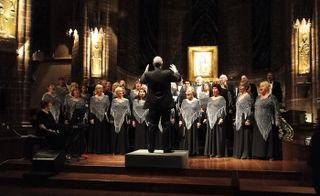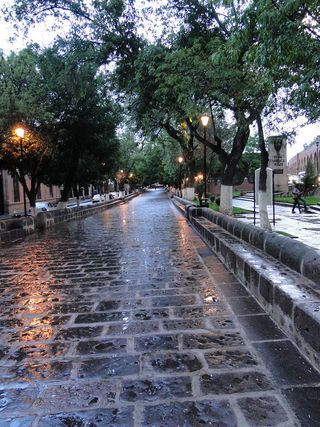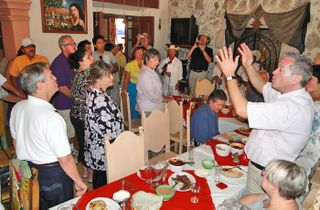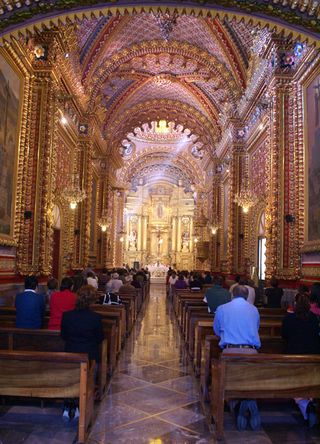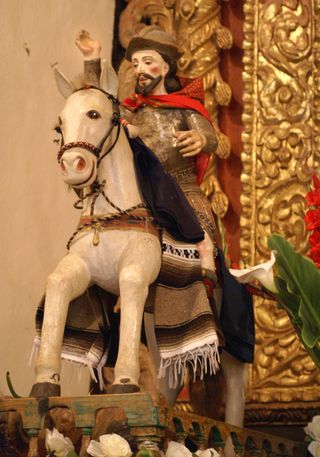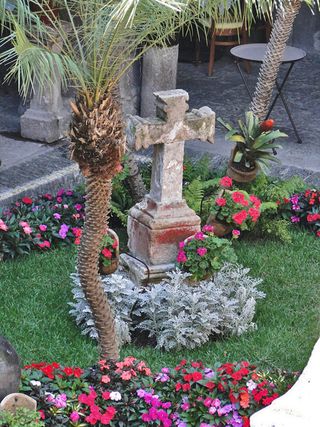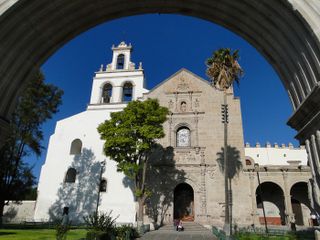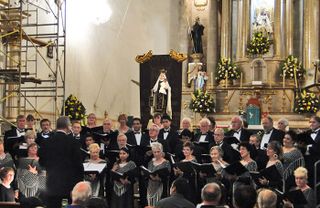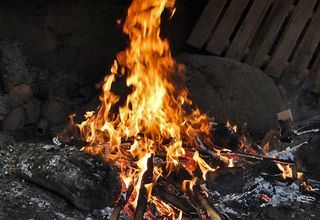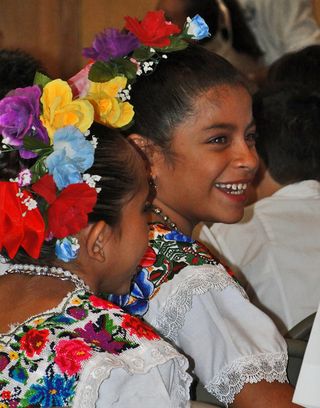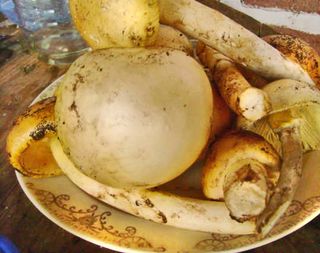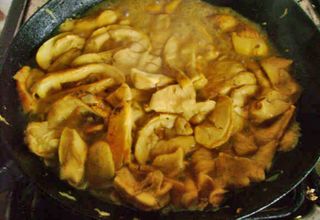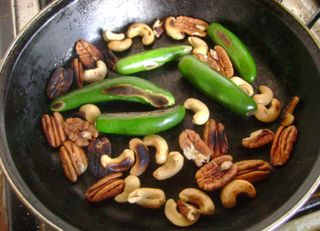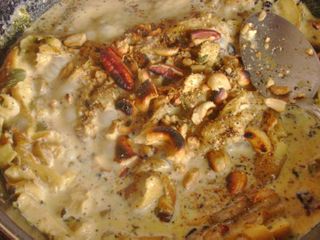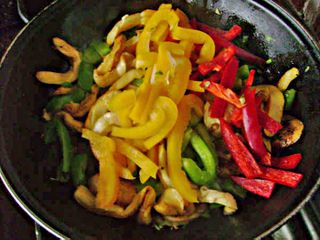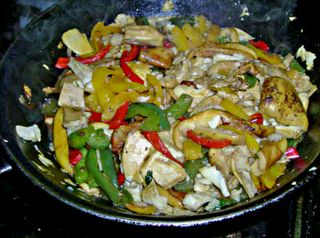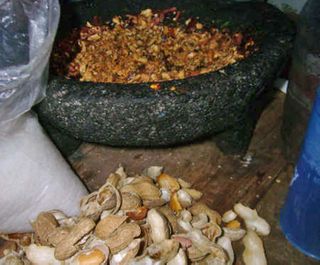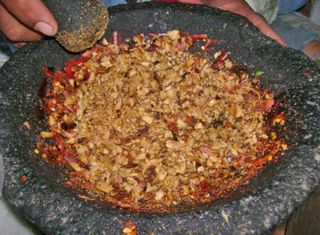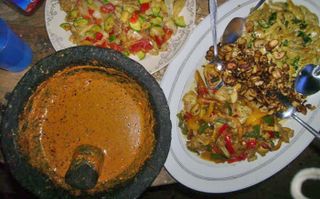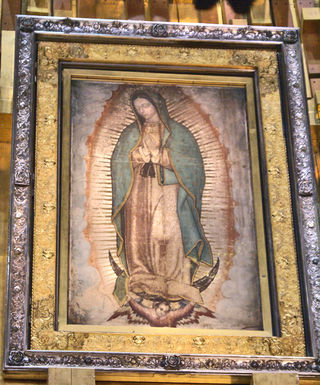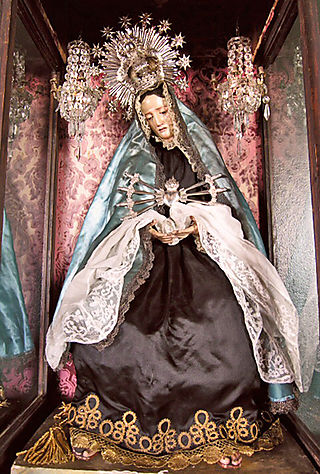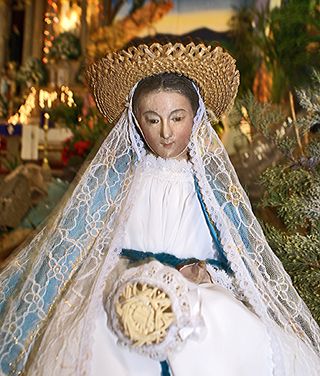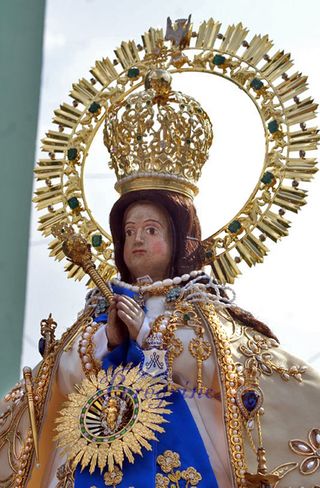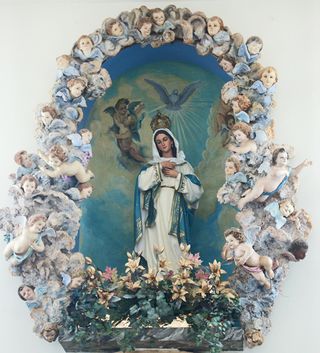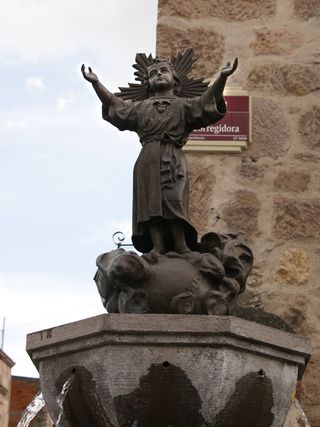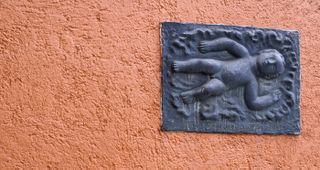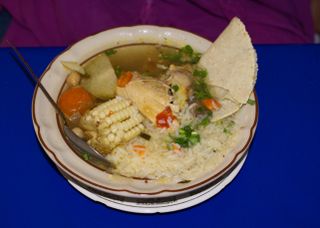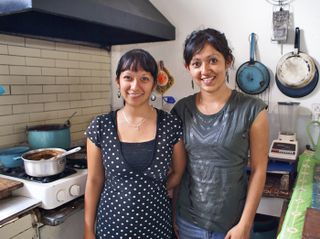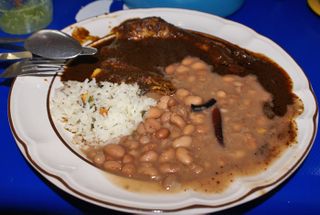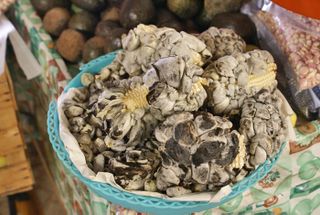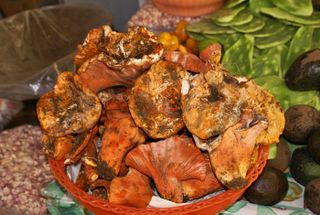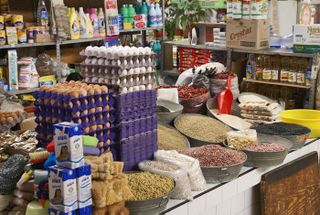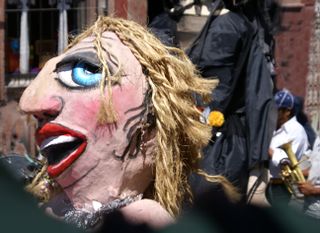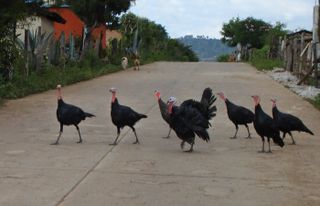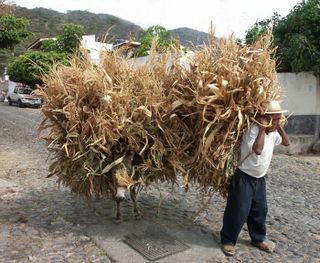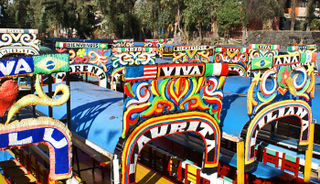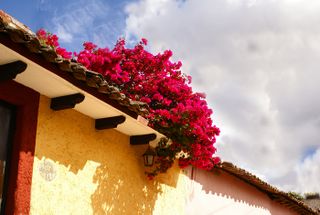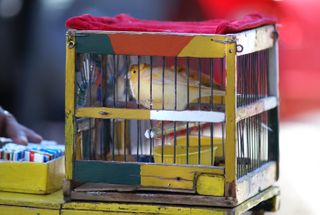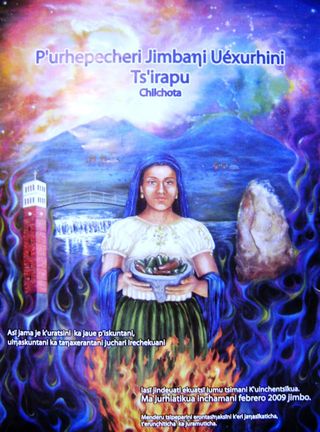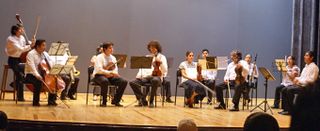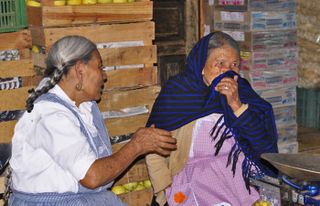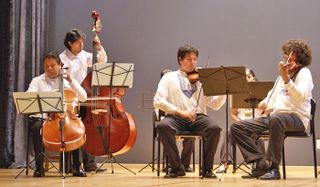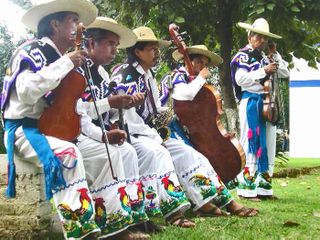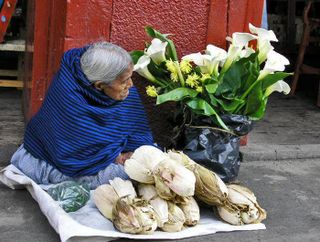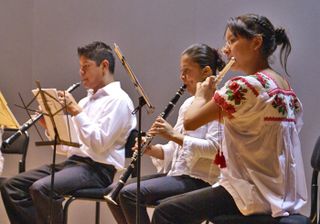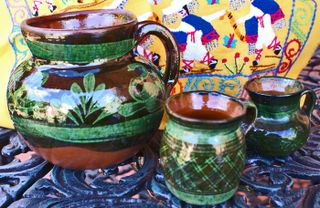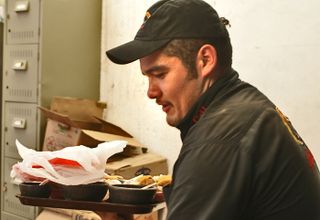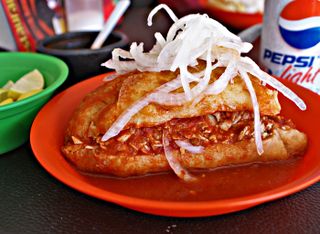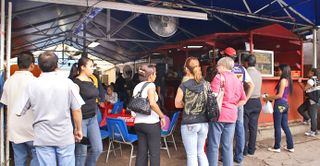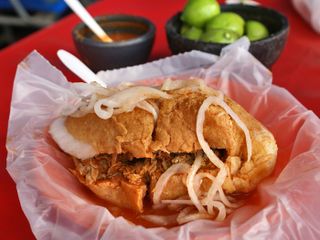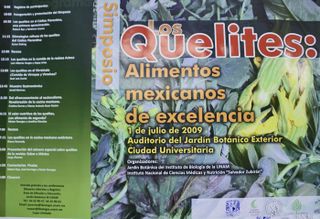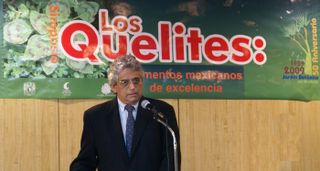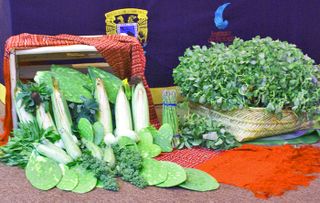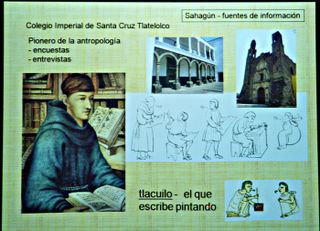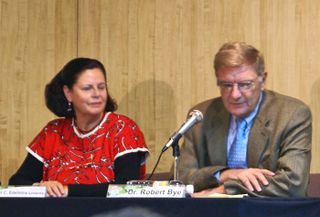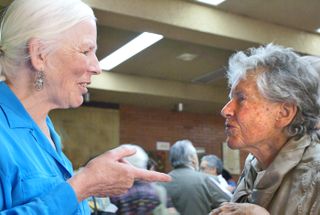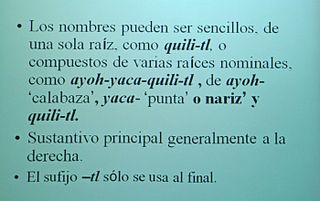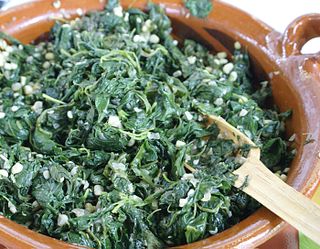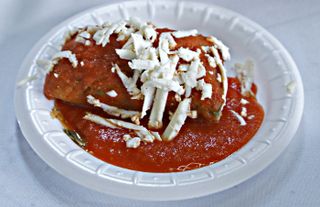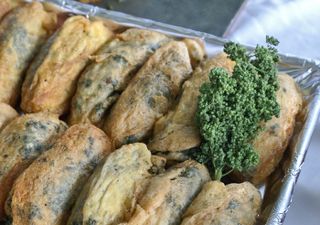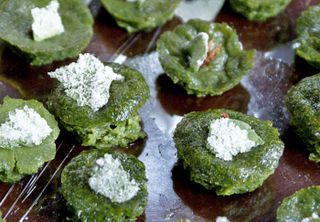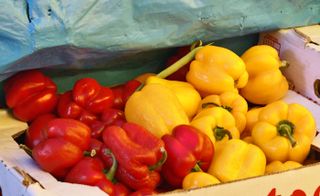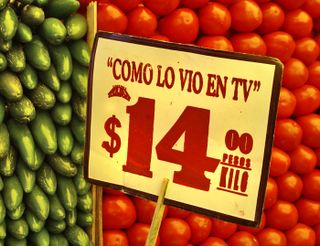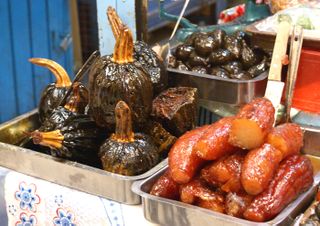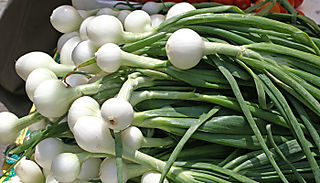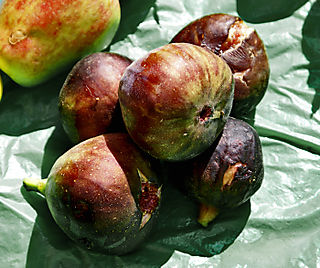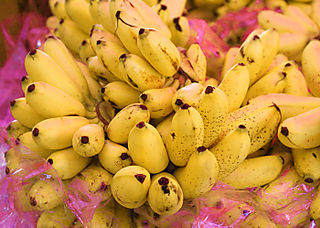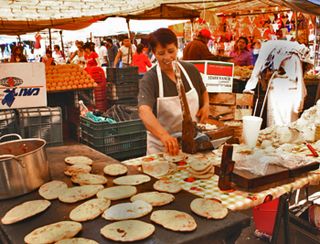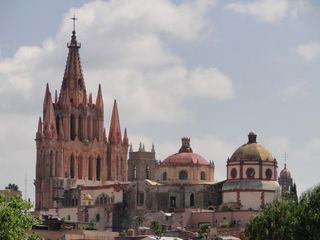
La Parroquia (Church of St. Michael the Archangel), San Miguel de Allende, Guanajuato. This church is one of the most-photographed in Mexico. Originally built in the late 1600s, the church facade was rebuilt close to the turn of the 20th Century. The architect, Zeferino Gutiérrez, had no formal training and patterned the church facade and towers after picture postcards of European cathedrals.
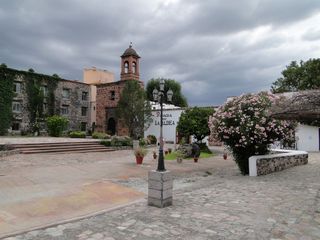
Entrance to Hotel Posada La Aldea, San Miguel de Allende. Los Cantantes del Lago stayed here during their time in town.
Exploring some of Mexico's historic sites was one of Los Cantantes' primary purposes in visiting the region around San Miguel de Allende. Dolores Hidalgo, Guanajuato–just half an hour from San Miguel–is known as la Cuna de Independencia, the cradle of independence. Standing on the steps of the historic church, Mexico Cooks! gave Los Cantantes a short history of Mexico's struggle for freedom from Spain.
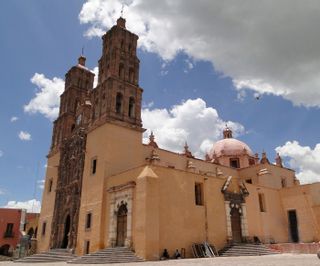
Templo de Nuestra Señora de los Dolores (Church of Our Lady of Sorrows), Dolores Hidalgo, Guanajuato. Padre Miguel Hidalgo y Costilla gave the Grito de Dolores (Cry from Dolores)–the call for independence from Spanish colonization–to his followers during the night of September 15, 1810.
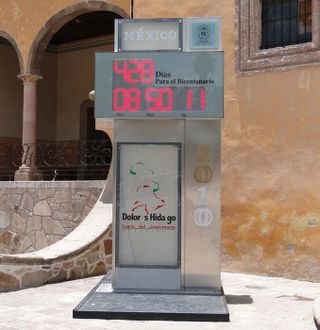
Mexico is preparing for its 2010 Bicentennial. This digital counter, positioned on the steps of the church where Hidalgo first gave the call for Mexico's freedom from Spanish rule, marks 428 days, eight hours, fifty minutes, and eleven seconds and counting, until the start of the bicentennial.
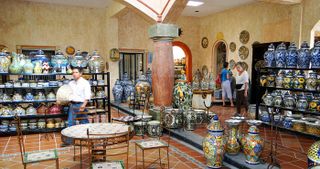
It wouldn't have been a trip to Dolores Hidalgo without stopping to shop for talavera, the colorful local pottery specialty. Los Cantantes surprised the fine workshop Arte San Gabriel with the large amount of talavera they bought and loaded onto the bus to take home.
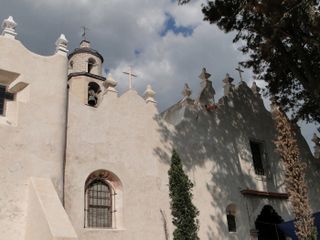
The Santuario de Jesús el Nazareno (Sanctuary of Jesus the Nazarene), Atotonilco, Guanajuato, was built in the 18th Century.
Los Cantantes del Lago scheduled two concerts in Guanajuato. Mexico Cooks! arranged for the first of the two, to be sung outdoors at the Santuario de Jesús el Nazareno to celebrate the beginning of the church's fiestas patronales, scheduled for the third weekend in July. As Padre Fernando Manríquez, the pastor of the Santuario, told me, "This concert is the perfect botana (appetizer) for the fiestas!"
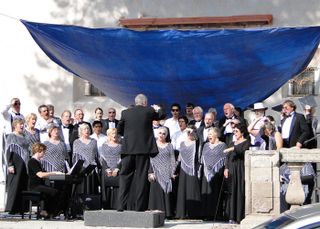
Los Cantantes sang in the atrium of the Santuario de Jesús el Nazareno.

The crowd attending the concert in Atotonilco was composed for the most part of people making a spiritual retreat at the church.
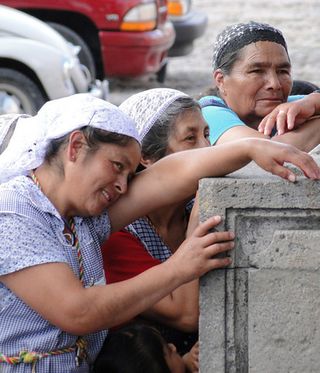
These women were completely enthralled by the singing. One elderly woman (not pictured) listened to parts of the concert with happy tears running down her cheeks.
The members of Los Cantantes del Lago were as profoundly touched as the audience was by the concert at the Santuario. It was impossible not to draw the comparison between the formal, elegantly dressed audiences that usually attend Los Cantantes concerts and this audience, many of whom had undoubtedly never heard a live concert of this type. One of the Cantantes said to me, "Here we are, out in the middle of nowhere, dressed in
our tuxedos and fancy gowns, singing for people who appear to be so poor. What must they think?" We agreed that it honored the audience that this marvelous chorus, dressed to the nines, came to sing for them.
As an encore, Los Cantantes sang the Mexican standard, Cielito Lindo. The entire audience sang along in Spanish to the song's chorus–you already know it:
Ay, ay, ay, ay, canta y no llores!
Porque cantando se alegran, cielito lindo, los corazones.
Oh, oh, oh, oh, sing and don't cry!
Because, little heaven, singing makes our hearts joyful.
How true the words are, and never brought closer to home than in this intensely emotional concert. In Atotonilco, glorious music made all of our hearts overflow with joy.
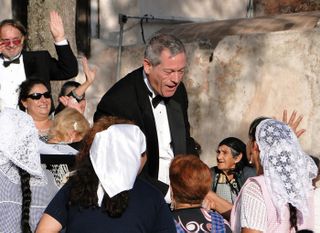
No one wanted the concert to end. As soon as the last encore was sung, the crowd surged forward to thank Maestro Timothy Welch and Los Cantantes del Lago for their visit to Atotonilco.
Los Cantantes del Lago sang the final concert of the Central Mexico Tour at the Teatro Ángela Peralta in San Miguel de Allende. A benefit for the Centro Infantil San Pablo, a program for needy Mexican children, the concert was a tremendous success.

Final concert at the Teatro Ángela Peralta, San Miguel de Allende.
As the surprise finale to the evening, Maestro Tim auctioned off the only copy he had left of Los Cantantes del Lago's newest recording of Christmas music. The audience held its breath while the bidding went higher–and higher–and higher! Hammered down at over 2500 pesos, all the proceeds from the auction of that one CD went to the Centro Infantil San Pablo. Later in the evening, another audience member matched that bid as his personal donation to the school.
Filled with the memories of its warm reception wherever it sang during eleven days' travel through two states and countless towns, all done in two huge buses filled with singers, equipment, baggage, and new artisan purchases, Los Cantantes del Lago took to the road from San Miguel de Allende for the return home to Ajijic, Jalisco.
All photos courtesy of Robert Kelly. Robert, the designated photographer for Los Cantantes del Lago, has
posted many additional photos of the 2009 Central Mexico Tour in these files:
Looking for a tailored-to-your-interests specialized tour in Mexico? Click here: Tours.
